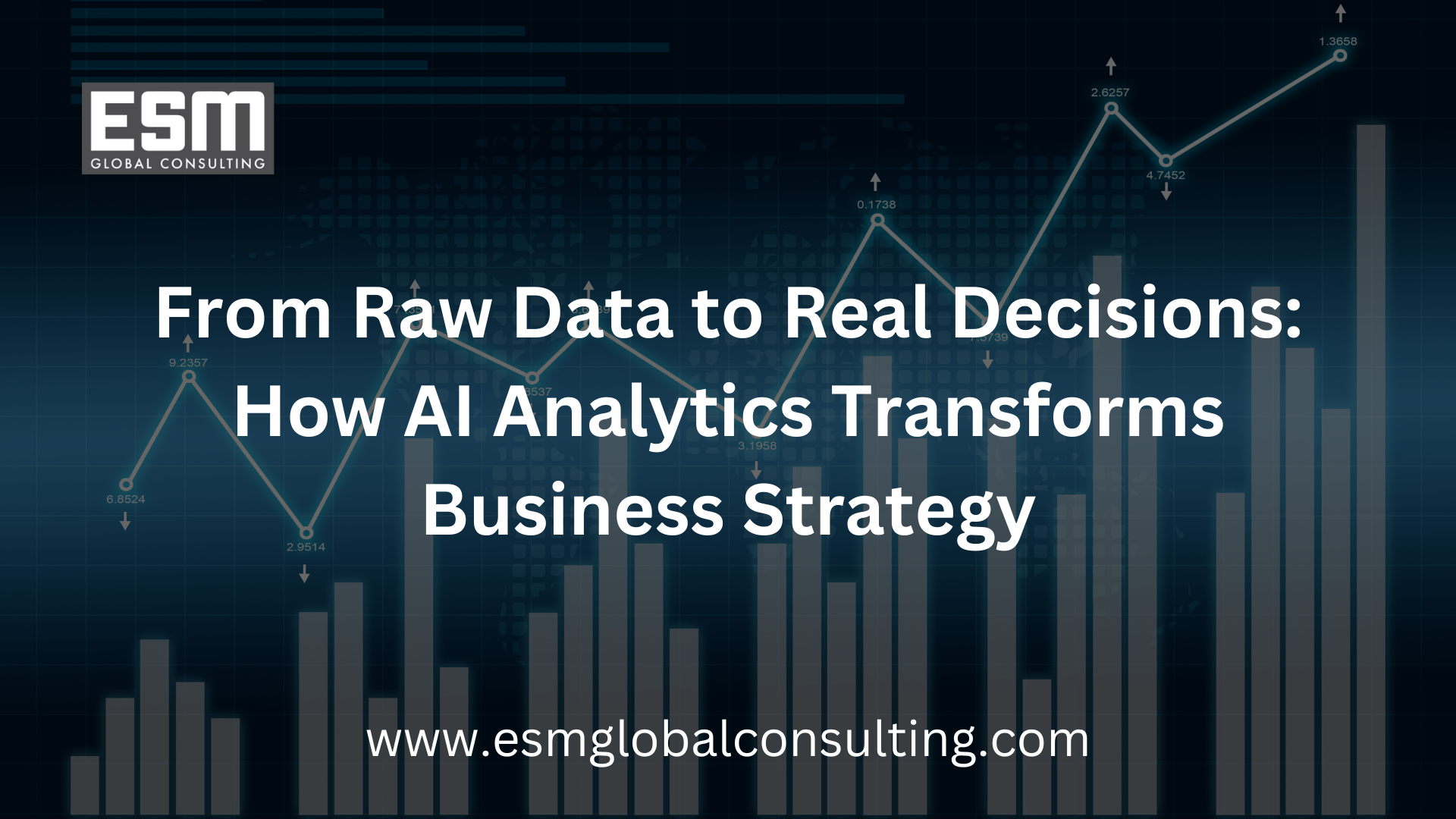From Raw Data to Real Decisions: How AI Analytics Transforms Business Strategy
In today’s digital economy, businesses generate overwhelming amounts of data. From customer transactions to website interactions, every touchpoint leaves a digital footprint. The challenge is not the lack of data but the ability to extract meaningful insights that drive real business decisions. This is where AI-powered data analytics becomes a game changer.
Companies that once relied on intuition or manual reporting are now leveraging artificial intelligence (AI) and machine learning (ML) to transform raw, unstructured data into clear, actionable strategies. The result? Faster decisions, better predictions, and a stronger competitive edge.
Why Raw Data Alone Isn’t Enough
Data in its raw form is messy. It’s often unstructured, inconsistent, and difficult to interpret without the right tools. Traditional analytics solutions struggle with:
Volume: The sheer size of data generated daily.
Variety: Structured (databases, spreadsheets) and unstructured (emails, images, videos) data.
Velocity: The speed at which new data is produced and must be analyzed.
Without advanced analytics, valuable insights remain buried in data silos, leaving businesses blind to opportunities and risks.
How AI Analytics Changes the Game
AI analytics doesn’t just process data—it learns from it. By leveraging ML algorithms, natural language processing, and predictive modeling, businesses can:
Identify Patterns and Trends
AI systems spot correlations and anomalies in real time that humans might miss.Predict Future Outcomes
Predictive analytics allows companies to forecast customer behavior, market shifts, and operational risks.Support Decision-Making
Instead of static reports, AI delivers dynamic dashboards and recommendations tailored to specific business goals.Automate Data Processing
Freeing teams from manual data crunching, AI automates cleaning, categorization, and analysis at scale.
Real-World Applications
Retail: Predict customer buying behavior and personalize marketing campaigns.
Finance: Detect fraud before it impacts the bottom line.
Healthcare: Analyze patient data to improve treatment outcomes.
Manufacturing: Forecast demand and optimize supply chain management.
Every industry benefits from smarter, data-driven decision-making powered by AI.
Benefits for Business Strategy
AI analytics empowers leaders to:
Make faster, more confident decisions using real-time insights.
Uncover hidden opportunities by identifying trends before competitors.
Mitigate risks through early detection of anomalies and threats.
Increase efficiency by automating repetitive reporting tasks.
Ultimately, businesses move from reactive decision-making to proactive strategy-building.
Overcoming Common Challenges
While powerful, AI analytics requires a strategic approach. Key challenges include:
Data Quality: Poor data in equals poor insights out.
Integration: AI tools must connect seamlessly with existing systems.
Skill Gaps: Businesses need the right mix of technical and domain expertise.
Change Management: Shifting to a data-driven culture requires buy-in across the organization.
ESM Global Consulting helps businesses overcome these hurdles, ensuring a smooth transition from raw data to actionable intelligence.
Conclusion
Raw data alone is not a strategy, it’s potential waiting to be unlocked. With AI-driven analytics, businesses transform overwhelming datasets into precise insights that guide smarter decisions and fuel long-term growth.
The future belongs to companies that don’t just collect data but know how to listen, learn, and act on what it reveals.
FAQs
1. What is AI analytics in simple terms?
AI analytics uses artificial intelligence and machine learning to automatically analyze large datasets, identify patterns, and provide actionable insights.
2. How is AI analytics different from traditional business intelligence?
Traditional BI focuses on descriptive reporting (what happened), while AI analytics predicts future outcomes and prescribes actions.
3. Do small businesses benefit from AI analytics?
Yes. Even small companies can use AI-powered tools to compete with larger players by making smarter, faster decisions.
4. Is AI analytics expensive to implement?
Costs vary, but cloud-based solutions and consulting services make AI analytics accessible to businesses of all sizes.
5. How can ESM Global Consulting help?
ESM provides tailored AI and data analytics solutions, ensuring businesses derive maximum value from their data while addressing integration, security, and strategy challenges.


